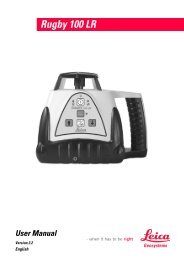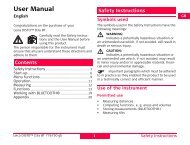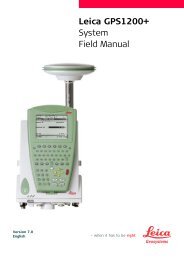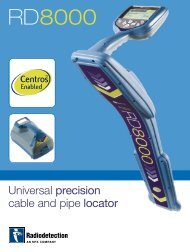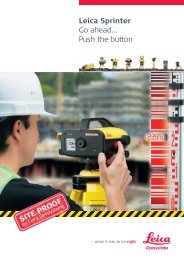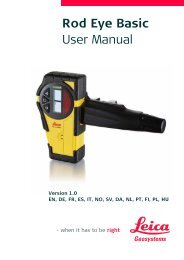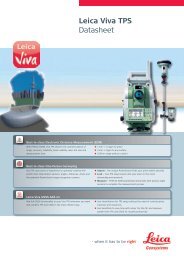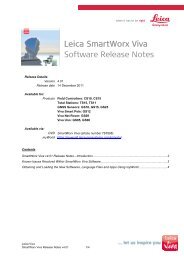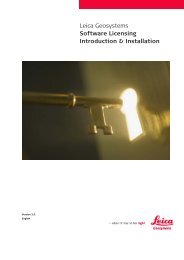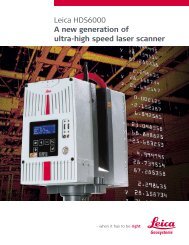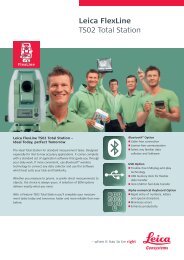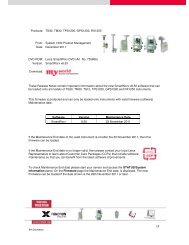GPT-3000 SERIES - FLT Geosystems
GPT-3000 SERIES - FLT Geosystems
GPT-3000 SERIES - FLT Geosystems
Create successful ePaper yourself
Turn your PDF publications into a flip-book with our unique Google optimized e-Paper software.
17 CHECK AND ADJUSTMENT17 CHECK AND ADJUSTMENT17.1 Checking and adjusting of instrument constantNote: Each of the Prism mode and Non-prism mode has instrument constant.You must check the instrument constants in each mode and obtain the instrument constantsof Prism mode and Non-prism mode.● If you reset the instrument constant of prism mode ( Prism-long), you must vary the prismconstant (Prism-short) by the same quantity as the amount of increase or decrease of theinstrument constant of the prism mode ( Prism-long).● If you reset the instrument constant of non-prism mode ( Non-prism-long), you must vary theprism constant (Non-prism-short, Non-prism-middle) by the same quantity as the amount ofincrease or decrease of the instrument constant of the non-prism mode ( Non-prism-long).Normally, the instrument constant does not have discrepancy. It is recommended you measure andcompare with an accurately measured distance at a location where the precision is specificallymonitored on a consistent basis. If such a location is not available, establish your own base line over35m (when purchasing the instrument) and compare the data measured with the newly purchasedinstrument.In both cases note that the setup displacement of the instrument position over the point, the prism,baseline precision, poor collimation, atmospheric correction, and correction for refraction and earthcurvature determine the inspection precision. Please keep in mind these points.Also, when providing a base line in a building, please note that differences in temperature greatly affectthe length measured.If a difference of 5mm or over (Prism mode) or 10mm or over (Non-prism mode) is the result from thecomparative measurement, the following procedure as shown below could be used to change theinstrument constant.The procedure of Prism mode and Non-prism mode is the same. However, use a prism for prism modeor a white board for non-prism mode as a target.1) Provide point C on a straight line, connecting straight line AB which is almost level and about 100mlong. Measure straight lines AB, AC and BC.ACB2) Obtain the instrument constant by repeating 1) above several times.Instrument constant = AC+BC–AB3) When there is error between written instrument constant value and calculated value, reviewSection 17.4 “How to Set the Instrument Constant Value”4) Once again, measure at a calibrated baseline and compare results.5) If using above procedure and no difference is found from the instrument constant at the factory or adifference of over 5mm or over (Prism mode) or 10mm or over (Non-prism mode) is found, contactTOPCON or your TOPCON dealer.17-1



